Introduction
Have you ever looked out at your garden and thought it could use just a little more definition? Maybe the flower beds are blending into the lawn a bit too much for your liking, or perhaps the edges are starting to look a bit ragged. If you’re nodding along, you’re in the right place! Welcome to the world of edging gardening tools—your new best friends in the quest for a beautifully manicured outdoor space.
Using an edging gardening tool isn’t just about aesthetics; it’s about giving your plants the best chance to thrive. Think of it like setting a beautiful frame around a stunning painting. It highlights and enhances what’s inside, making everything look polished and inviting. But, just like choosing the right frame matters, picking the right edging tool is key to your gardening success.
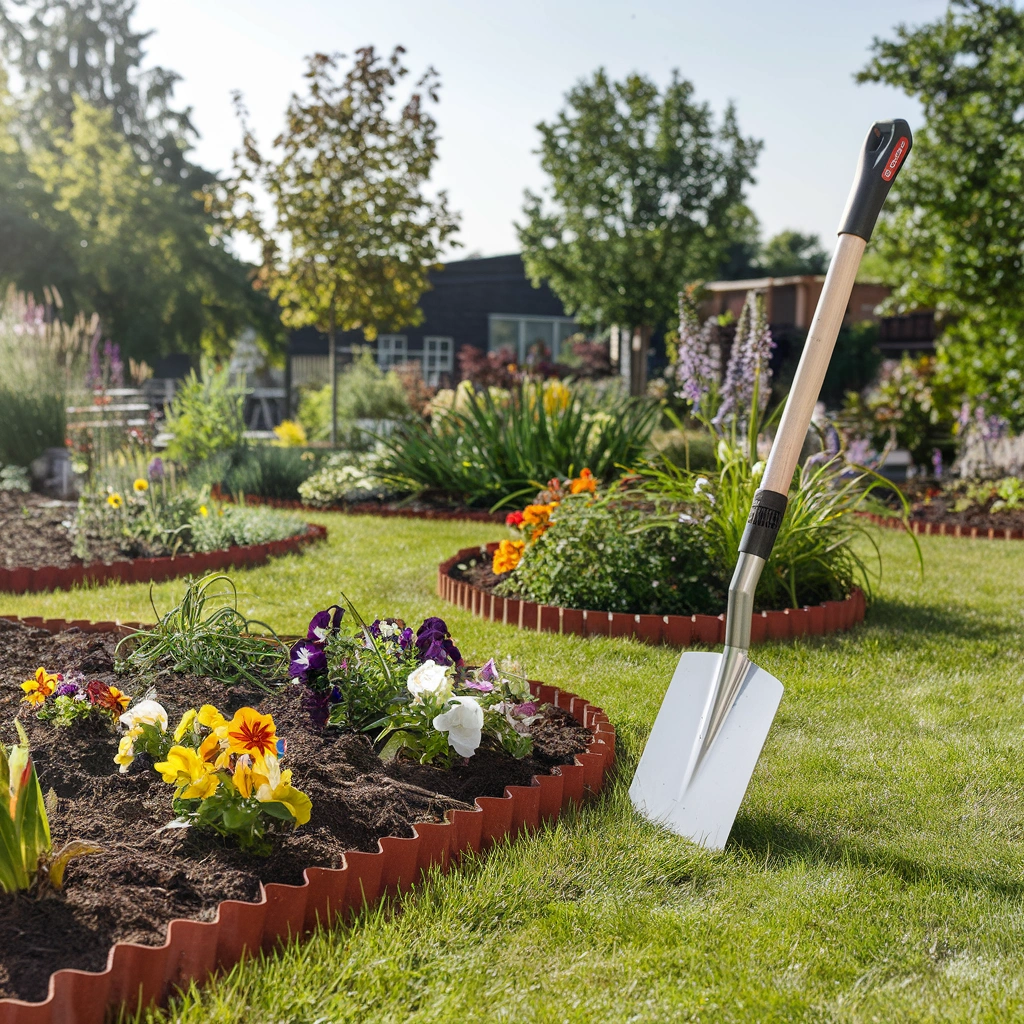
In this blog post, we’ll explore everything you need to know about edging gardening tools, from understanding what they are to learning how to choose the right one for your unique garden. We’ll even dive into some creative DIY projects to get your hands dirty—literally! So, whether you’re a seasoned green thumb or just starting out, this guide will help you unlock the secrets to a garden that looks as good as it feels.
Table of Contents
Understanding Garden Edging
When it comes to creating a beautiful garden, one essential tool that often gets overlooked is the edging gardening tool. This handy implement is not just for aesthetics; it plays a crucial role in defining spaces within your garden. If you’re new to gardening or simply looking to enhance your outdoor space, understanding the ins and outs of edging gardening tools is key.
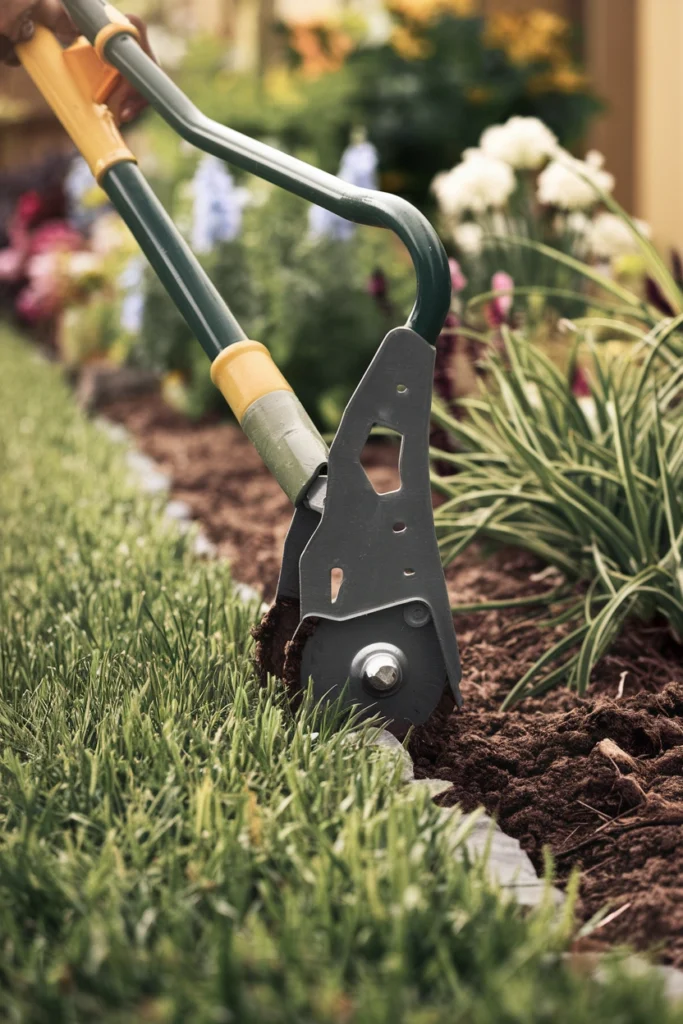
What is Garden Edging?
At its core, garden edging involves creating a clear boundary between different sections of your garden, such as between flower beds and lawns. Think of it as the frame around a masterpiece. Just like a good frame highlights a painting, the right edging can accentuate the beauty of your flower beds and keep everything looking tidy.
Benefits of Using Edging Tools
So, why should you invest in an edging gardening tool? Here are a few compelling reasons:
- Defines Boundaries: An edging gardening tool helps you create crisp lines, making your garden look well-maintained.
- Enhances Aesthetics: A neatly edged garden gives off a polished vibe that can turn a simple yard into a stunning landscape.
- Prevents Weeds: With proper edging, you can create a barrier that helps keep invasive weeds at bay.
- Easier Maintenance: Edges make it simpler to mow your lawn and care for your garden.
- Increased Functionality: Whether you’re creating a space for flowers, veggies, or decorative stones, an edging gardening tool sets the scene for any gardening idea you have in mind.
Types of Garden Edging Tools
Now, let’s dive into the different types of edging gardening tools available. Each type comes with its own set of advantages and ideal use cases:
- Metal Edging: Durable and long-lasting, metal edging is perfect for creating sharp lines in the garden. It’s great for a contemporary look.
- Plastic Edging: An affordable option, plastic edging is lightweight and easy to install. It’s ideal for beginners looking to define their garden space without breaking the bank.
- Wood Edging: This classic choice adds a rustic charm to your garden. While it may require more maintenance, it blends beautifully with natural landscapes.
- Stone Edging: For those wanting a more robust and permanent solution, stone edging can’t be beaten. It’s great for adding a touch of elegance to any garden.
- Flexible Edging: If you desire a more creative approach, flexible edging allows you to create curves and waves, giving your garden a unique design.
Essential Features of a Good Edging Tool
When you’re on the hunt for an edging gardening tool, keep an eye out for these essential features:
- Durability: Look for tools that can withstand the elements and regular use.
- Ergonomic Design: Comfort is key; a well-designed handle can make all the difference.
- Ease of Use: Simple tools can save you time and make edging less of a chore.
- Versatility: A good edging tool should be able to tackle various tasks, not just edging.
- Maintenance Needs: Consider how much upkeep you’re willing to invest in.
Safety Considerations When Using Edging Tools
Lastly, let’s talk safety. Using an edging gardening tool can be a delightful experience, but it’s essential to protect yourself while gardening. Here are a few tips:
- Wear Protective Gear: Gloves and sturdy shoes should be your gardening companions.
- Be Mindful of Your Posture: Good posture helps prevent strain while you work.
- Handle with Care: Always be cautious when using sharp tools.
Remember, the right edging gardening tool not only enhances the beauty of your garden but also makes your gardening tasks easier and more efficient. With this knowledge, you’re well on your way to transforming your garden into a stunning outdoor oasis. Whether you’re a beginner, a homeowner, a DIY enthusiast, or a professional landscaper, understanding these tools will make all the difference in your gardening journey!
Top 7 Edging Gardening Tools to Try
Now that you have a solid understanding of what an edging gardening tool is and its benefits, let’s dive into the heart of the matter: the top seven edging tools you should consider for your garden. Choosing the right edging gardening tool can significantly impact both the look and functionality of your outdoor space. Whether you’re a beginner or a seasoned gardener, these tools will help you create stunning garden edges that impress.
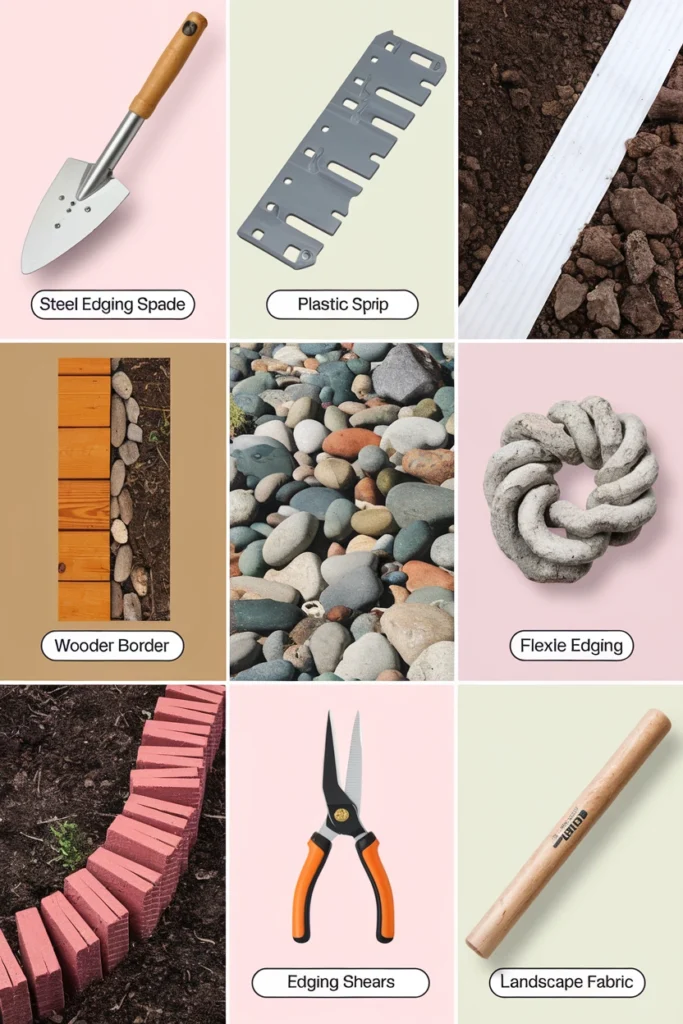
1. Steel Edging Spades
Steel edging spades are a go-to choice for many gardeners. Why? Because they’re robust and incredibly effective at creating clean lines. When using a steel edging spade, you can easily cut through tough soil, making it an ideal edging gardening tool for more established gardens.
- Benefits: Durable and maintains sharp edges for longer periods.
- Usage: Perfect for straight edges and deep cuts.
- Tip: Keep it clean and dry to prevent rust.
2. Plastic Edging Strips
If you’re after an affordable, easy-to-install solution, plastic edging strips are a splendid option. These lightweight edging gardening tools are particularly popular among beginners and DIY enthusiasts.
- Benefits: Lightweight, flexible, and inexpensive.
- Usage: Ideal for defining flower beds or curved paths.
- Tip: Ensure proper installation to prevent shifting over time.
3. Wooden Edging Borders
For a more organic look, wooden edging borders add a charming touch to your garden. They allow you to create a rustic aesthetic that blends seamlessly with your plants. While they might require a bit more maintenance than other edging gardening tools, the beauty they bring is worth it.
- Benefits: Eco-friendly and visually appealing.
- Usage: Great for flower beds and vegetable patches.
- Tip: Treat the wood with a sealant to prolong its life.
4. Stone Edging Solutions
If you’re looking for durability and a touch of elegance, stone edging might be your best bet. While it can be more labor-intensive to install, the results are stunning. Stone is a permanent solution that can withstand weather and time.
- Benefits: Long-lasting and visually striking.
- Usage: Perfect for formal gardens or pathways.
- Tip: Use a level to ensure that stones are evenly placed.
5. Edging Shears
Let’s not forget about edging shears! These handy edging gardening tools are perfect for those finishing touches. If your lawn and garden edges are looking a little wild, shears can help you tidy up those unruly bits.
- Benefits: Precise cutting and easy to maneuver.
- Usage: Ideal for trimming grass overhanging onto garden beds.
- Tip: Keep your blades sharp for the best results.
6. Flexible Edging
For a unique twist on traditional edging, consider flexible edging. This type of edging gardening tool allows you to create customized shapes, perfect for gardens that require a personal touch.
- Benefits: Highly versatile and can fit into any design.
- Usage: Excellent for curves and irregular shapes.
- Tip: Use stakes to secure it into the ground firmly.
7. Landscape Fabric
While not a tool in the traditional sense, landscape fabric is invaluable for maintaining clean edges in your garden. When paired with other edging gardening tools, it helps control weeds and retains moisture in the soil.
- Benefits: Prevents weed growth and enhances soil health.
- Usage: Best used beneath hardscapes or mulched areas.
- Tip: Overlay with mulch for a complete look.
How to Choose the Right Edging Tool for Your Garden
Now that you’ve explored some excellent edging gardening tools to try, it’s crucial to understand how to choose the right one for your specific needs. With so many options available, selecting the perfect edging gardening tool can feel a bit overwhelming. But don’t worry! I’m here to guide you through the process, making it easier and even a bit fun.
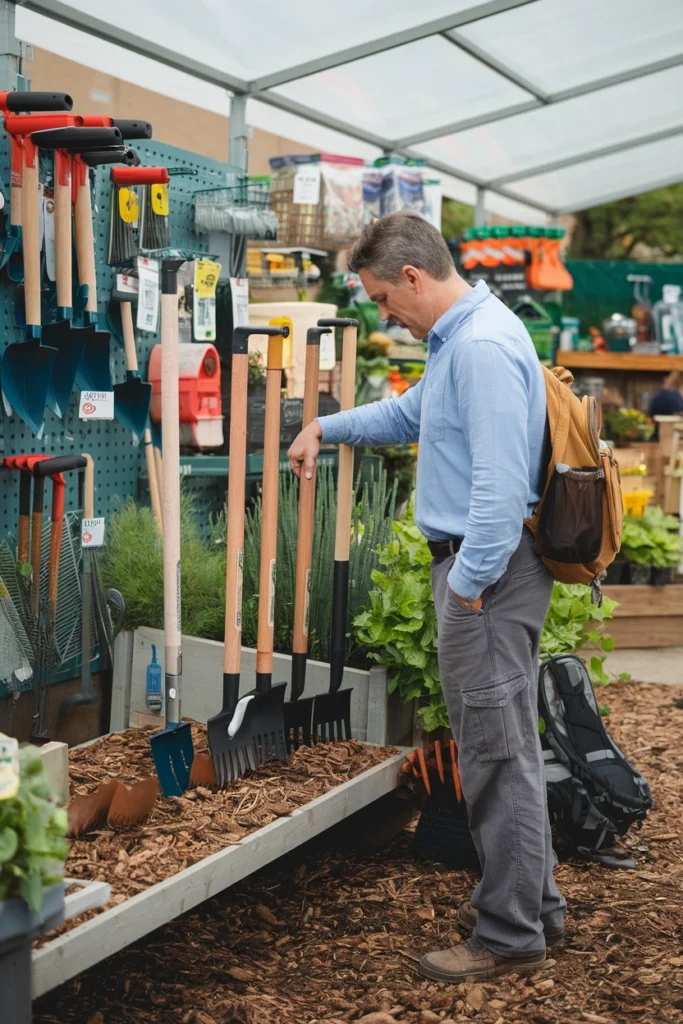
Assessing Your Garden’s Needs
To start, you need to take a good look at your garden. Ask yourself a few questions:
- What is the layout? Is it a simple rectangle, or are there curves and shapes to consider?
- What types of plants are you working with? Some plants may require more delicate edging than others.
- How much maintenance are you willing to invest? Some tools are low-maintenance, while others may need regular attention.
Understanding your garden’s specific requirements will lead you to the best edging gardening tool for the job.
Budgeting for Edging Tools
Next up is budgeting. You don’t have to break the bank to invest in a good edging gardening tool. Prices can vary widely, from budget-friendly plastic edging strips to more expensive stone or metal options. Here’s how to approach budgeting:
- Set a Range: Determine how much you’re willing to spend.
- Consider Longevity: Sometimes, spending a little more upfront on a durable tool can save you money in the long run.
- Look for Sales: Keep an eye on seasonal sales or local gardening events for great discounts.
Reading Reviews and Recommendations
One of the best ways to gauge the effectiveness of an edging gardening tool is by checking out customer reviews. Websites, gardening forums, and social media can provide valuable insights. Here’s what to keep in mind:
- Look for Patterns: If multiple reviews mention the same issue, that’s a red flag.
- Seek Recommendations: Ask friends or local gardeners about their favorite tools. Personal experiences can be incredibly helpful.
- Compare Brands: Don’t settle for the first option you see. Research different brands and their offerings.
Trying Before You Buy
If possible, you should always try an edging gardening tool before purchasing it. Many garden centers have demo tools available, allowing you to see how they feel in your hands. Here are a few tips on what to observe during your test drive:
- Comfort: Does the tool feel good to hold? Ergonomic designs can make a big difference.
- Weight: Is it too heavy or too light? You want something that feels manageable.
- Ease of Use: Can you easily maneuver it around your garden layout?
Best Retailers for Edging Tools
Finally, let’s talk about where to shop. If you’re looking for the best edging gardening tool, consider these options:
- Local Garden Centers: Often have knowledgeable staff who can offer personalized advice.
- Home Improvement Stores: Great for a wide variety of tools and often have good return policies.
- Online Retailers: Websites like Amazon or dedicated garden sites offer customer reviews, making it easier to compare products.
DIY Edging Projects to Enhance Your Garden
If you’re feeling inspired and want to take a hands-on approach to your garden, DIY edging projects can be a rewarding way to implement your creativity while using various edging gardening tools. Not only do these projects enhance the beauty of your outdoor space, but they also give you a sense of accomplishment. Let’s explore some fantastic DIY edging ideas that can truly elevate your garden.

Simple Edging with Pavers
One of the most popular and straightforward ways to edge your garden is with pavers. This project is perfect for anyone looking to create a clean and durable border. Here’s how to do it:
- Gather Your Materials: You’ll need pavers, sand, and a level.
- Plan Your Design: Decide on the shape you want. Straight lines are easier, but curves can add an elegant touch.
- Prepare the Area: Clear the ground of weeds and debris, then level the soil.
- Lay the Pavers: Place your pavers in the desired pattern. Use the level to ensure they’re even.
- Fill Gaps with Sand: Brush sand over the pavers to fill in the gaps, which helps secure them in place.
This method not only looks great but also makes using your edging gardening tool a breeze when trimming grass or maintaining flower beds. For more creative border ideas, check out our guide on lawn edge border ideas.
Creative Use of Recycled Materials
For those who love the idea of sustainability, using recycled materials for edging can be both fun and trendy. Consider these options:
- Old Bricks: Stack them to create a rustic border that’s both charming and cost-effective.
- Wooden Pallets: Repurposed wooden pallets can be cut and arranged to form unique edges—just remember to treat the wood to prevent decay.
- Wine Bottles: Bury the bottoms of empty wine bottles neck-side up for a quirky and colorful garden border.
These creative uses not only save money but also tell a story about your garden. Who doesn’t love a good conversation starter?
Building a Raised Edging Border
A raised edging border is a fantastic way to make your garden visually stand out while providing excellent drainage for plants. Here’s how to create one:
- Select Your Material: You can use wood, bricks, or even stones.
- Outline the Area: Use a garden hose or string to mark where your raised border will go.
- Dig a Trench: Excavate a trench along your outline that is slightly deeper than the height of your chosen material.
- Install Your Border: Place your material into the trench, ensuring it’s level and stable.
- Fill with Soil: Add soil on the inside, raising the garden bed and creating an attractive, defined area.
This raised edging not only defines your space but also promotes better growth for your plants.
Incorporating Plants in Your Edging
Why not go a step further and include plants in your edging? Using small flowering plants or low-growing herbs can create a natural border that looks alive and vibrant. Here’s how to do it:
- Choose the Right Plants: Opt for perennials or smaller plants that won’t overshadow your main garden.
- Plan Your Layout: Arrange plants in a way that they create a continuous border.
- Use Your Edging Gardening Tool: Dig trenches and plant your greenery along the defined edges.
This method not only enhances the aesthetics of your garden but also attracts pollinators, contributing to a healthier ecosystem. For more inspiration, check out 10 creative grass edging ideas.
Tips for Seasonal Maintenance of Edging
Once you’ve completed your DIY edging projects, it’s essential to maintain them throughout the seasons. Here are some maintenance tips:
- Regular Trimming: Use your edging gardening tool to keep grass and weeds from encroaching on your borders.
- Check for Damage: Inspect the materials used in your edging, especially wood and stone, for wear and tear.
- Replenish Mulch or Bark: If you’ve used mulch in your edging, refresh it periodically to keep your garden looking neat.
These simple steps will ensure your DIY edging remains as stunning as the day you completed it, allowing your garden to flourish year-round.
With these DIY edging projects and tips, you’ll be well on your way to enhancing your garden with the right edging gardening tool and a touch of creativity. Whether you’re a beginner or a seasoned gardener, there’s something for everyone in these ideas. Happy gardening!
Common Mistakes to Avoid When Using Edging Tools
Using an edging gardening tool can transform your garden into a beautifully manicured space, but there are some common pitfalls that even seasoned gardeners can stumble into. Let’s explore these mistakes and how to avoid them. By steering clear of these errors, you’ll make the most of your edging gardening tool and ensure your garden looks its best throughout the seasons.
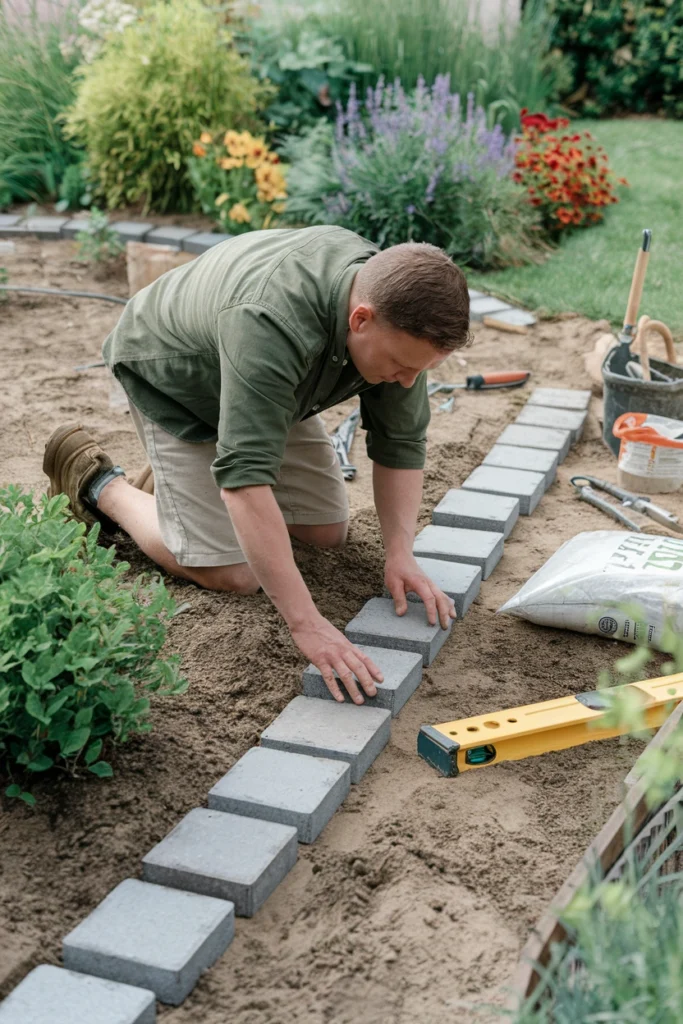
Over-Edging: How Much is Too Much?
One of the biggest mistakes I see is over-edging. It’s easy to get carried away, but too much edging can negatively impact your plants. Here’s how to maintain balance:
- Define, Don’t Dominate: Your edges should enhance the garden, not overshadow it. Aim for a clean line that complements your plants.
- Leave Room for Growth: Remember, your plants will grow! Be mindful of their space when using your edging gardening tool.
- Regularly Assess: Take a step back and look at your garden as a whole. If the edges start to look too harsh, it might be time to adjust.
Choosing the Wrong Material
Selecting the wrong edging material can be a costly mistake. Different gardens call for different approaches. Here’s how to choose wisely:
- Consider Style: Your choice of material should complement your garden theme. For a cottage garden, wooden borders work well, while modern gardens might benefit from sleek metal.
- Functionality Matters: Think about maintenance and longevity. For instance, plastic edging may warp over time, while stone or metal is more durable.
- Soil Conditions: Different materials work better in certain soil types. Research what’s best for your specific garden conditions.
Neglecting Proper Installation Techniques
How you install your edging gardening tool is as important as the tool itself. Follow these tips to avoid common installation mishaps:
- Follow Guidelines: Each edging material comes with its installation instructions. Be sure to follow them closely for the best results.
- Dig Deep Enough: A shallow installation can lead to edges shifting or sinking over time. Aim for a depth that allows for stability.
- Check for Level: Ensure your edging is level as you install it. Uneven edges can be unsightly and invite weeds.
Ignoring the Surrounding Landscape
When installing your edging gardening tool, it’s crucial to consider the surrounding landscape. Here’s how to keep it cohesive:
- Design Harmony: Your edges should create a seamless flow between different garden areas. Too much contrast can create an awkward visual.
- Use Color Wisely: If you’re using plants as part of your edging, consider their color and height. Make sure they harmonize with your overall garden palette.
- Plan for Changes: Gardens evolve, and so should your edging. Keep flexibility in mind when planning your design—this allows you to adapt as your plants grow.
Failing to Plan for Future Growth
One common mistake is not considering how your garden will change over time. Here’s how to future-proof your edging:
- Leave Space for Expansion: As plants grow, be sure your edges won’t become overcrowded.
- Adjust as Needed: Be open to modifying your edging if your plants start to take over. A good edging gardening tool should allow for easy adjustments.
- Use Transition Plants: Choose plants that can act as a buffer between your garden and lawn. This softens the look of hard edges while still providing definition.
Conclusion
And there you have it! Whether you’re looking to tidy up your garden with a simple edging gardening tool or dive into an ambitious DIY project, the right tools and techniques can make all the difference. Remember, edging isn’t just about keeping your spaces neat; it’s about enhancing the beauty of your hard work and creativity.
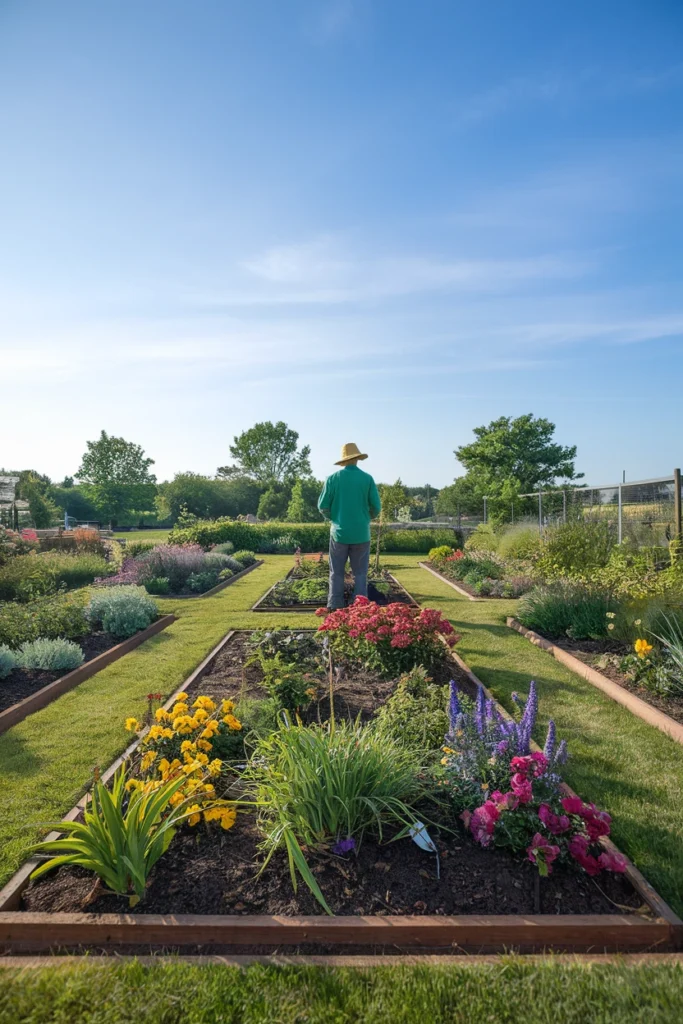
So, what are you waiting for? Grab your edging gardening tool and get started on transforming your outdoor oasis! Will you go for steel spades for that clean line, or perhaps experiment with some charming wooden borders? The choices are as endless as your imagination.
Happy gardening, and may your edges be sharp and your blooms be bright!
FAQ
1. What is an edging gardening tool?
An edging gardening tool is used to create clean, defined edges between different areas of your garden, such as flower beds and lawns. It enhances the overall look of your outdoor space and helps prevent weeds.
2. Why should I use an edging tool in my garden?
Using an edging tool not only improves the aesthetics of your garden but also makes maintenance easier by defining borders that keep grass and weeds at bay.
3. What types of edging tools are available?
There are various types of edging gardening tools, including steel edging spades, plastic strips, wooden borders, and stone solutions. Each has its own benefits depending on your garden’s design and desired look.
4. How do I choose the right edging tool for my garden?
Consider the layout of your garden, the types of plants you have, and your budget. Trying out several tools in-store can help you find one that feels comfortable and meets your needs.
5. Can I create my own garden edging?
Absolutely! DIY projects using pavers, recycled materials, or even plants can provide a unique touch to your garden. There are plenty of creative ways to edge your space while making it personal and stylish.
